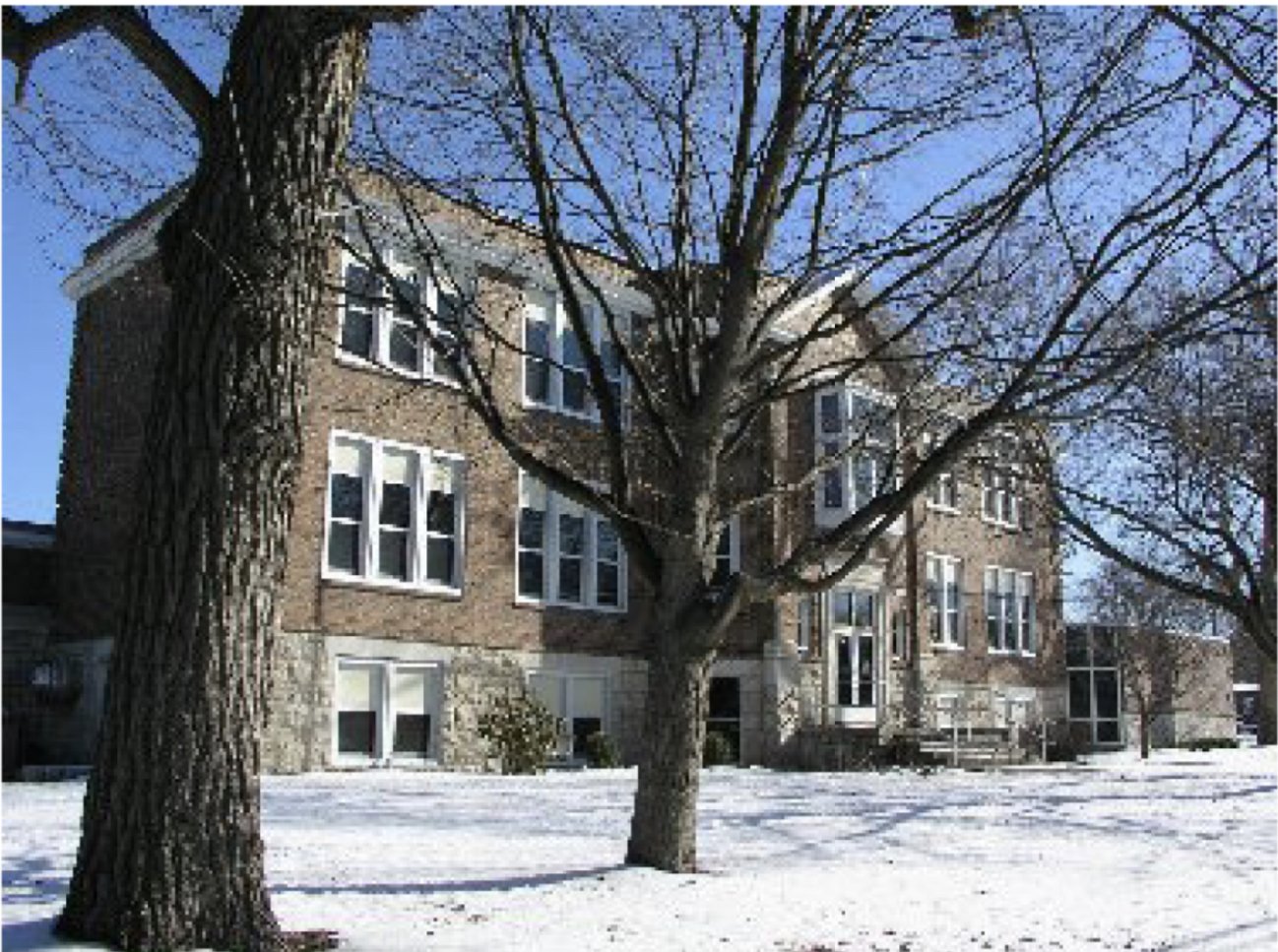Field School and Eugene Field
CoMo 365 is written by historian Matt Fetterly as part of a collaboration between the
Boone County Historical Society and CoMo Preservation.
On February 10, 1966, the Columbia Missourian reported on overcrowding at Eugene Field Elementary School, saying, “they serve lunch in the gym, give speech lessons in the sick bay, and violin lessons in the hall.” The school was attended by 427 students, who used just 14 classrooms. Field Elementary was erected in 1916 as part of a large expansion project for Columbia Public Schools, it was the 4th elementary school in Columbia. It was named a Most Notable Property by the Historic Preservation Commission in 2007. Architectural historian Deb Sheals describes it as follows:
“The building was erected in 1916, as part of a large school improvement program in Columbia. Funded by a general school bond issue that passed the same year it was started, the project included this school building, a new building for Douglass School and upgrades for existing schools.
Field School and the new Douglass School may have had the same architect; they are built of very similar materials and each utilizes simple Classical Revival styling that includes symmetrical fenestration, monumental brick pilasters on the facade and brick quoins at major building corners.
Field School was also the first Columbia Public School to be named after a literary figure. It was named Eugene Field Elementary School for native Missourian and famed writer Eugene Field (1850-1895). Field may have passed by the future site of this school at some point. He lived in Columbia while studying at the University of Missouri in the late 1860s. He went on to develop a successful career in journalism and later began publishing poetry. He is the author of the famous children's poem "Wynken, Blynken, and Nod."
In January of 2010, the students of Field School were transferred to the newly constructed Alpha Hart Lewis School, and the building was renovated to house an early childhood program and the school system's gifted program. Although an arguably unsympathetic style of replacement window sash has impacted the historic character of the building, the original patterns of fenestration have survived, and the school continues to reflect its long history as a Columbia public school.”
Eugene Field School
From City of Columbia Map Project Most Notable Properties Inventory
Eugene Field was born in St. Louis in 1850 to a wealthy family. After being expelled from Knox College for a practical joke, Field came to Columbia in the 1870s to attend the University of Missouri. He was a horrible student, failing his math class and never graduating. However, he developed a reputation as a prankster and writer. He led student raids on the university president’s wine cellar, painted the president’s house school colors, and fired decorative (but apparently functional) cannons at midnight. He wrote for the student newspapers, and some of his first published poems are in the Savitar, the university’s yearbook. Perhaps the most well known of his accomplishments in Columbia was giving a nickname to a young boy: Paul Blucher Venable. Field took a liking to him and called him “Booche” saying “Blucher was no nickname for a little boy.” Booche grew up and founded the legendary billiards hall "Booches” in 1884.
Eugene Field’s childhood home in St. Louis is a National Historic Landmark and a museum. Many schools around the country, and especially Missouri are named after him, over thirty are listed on Wikipedia. He is also the namesake of a branch of the Denver Public Library, an apartment building, and a dormitory at the University of Massachusetts. His home in Denver, Colorado is listed on the National Register of Historic Places. Field died at age 45 in Chicago, but his works of poetry are still celebrated today.
Eugene Field in 1885
From Wikimedia Commons
This CoMo 365 blog entry was constructed by Matt Fetterly using these sources:
Missourian Staff (February 10, 1966). Too Many Children Crowd Field School. Columbia, Missouri: Columbia Missourian. Archived at Missouri Digital Heritage. Accessed February 12, 2023.
Cater, Caitlin (December 19, 2009). Eugene Field Elementary School closes its doors after 93 years. Columbia, Missouri: Columbia Missourian. Accessed February 12, 2023.
Sheals, Deb (2010-2011). City of Columbia Map Project 2010-2011 Inventory Form. Columbia, Missouri: Columbia Historic Preservation Commission. Accessed February 12, 2023.
Long, Amanda (May 28, 2021). Booches the Legacy that Lives On. Columbia, Missouri: CoMo Magazine. Access February 12, 2023.
Britannica, The Editors of Encyclopaedia (2022, October 31). Eugene Field. Encyclopedia Britannica. Accessed February 12, 2023.
Wikipedia contributors. (2022, November 2). Eugene Field. In Wikipedia, The Free Encyclopedia. Retrieved 18:32, February 12, 2023.
Do you have ideas for future CoMo 365 topics? Did you notice an error?
Email me at como365@protonmail.com or leave a comment below.


